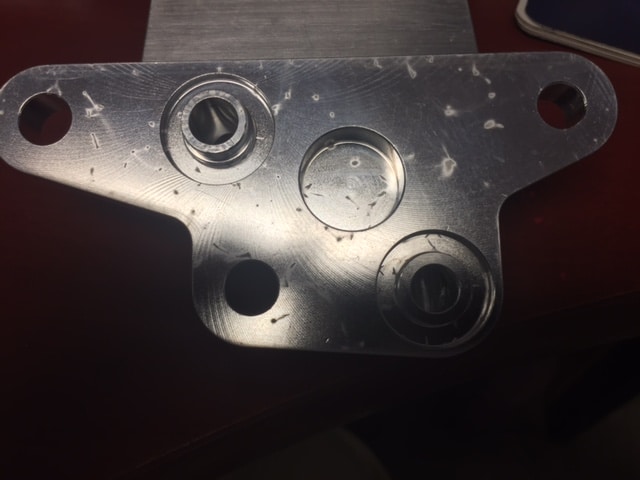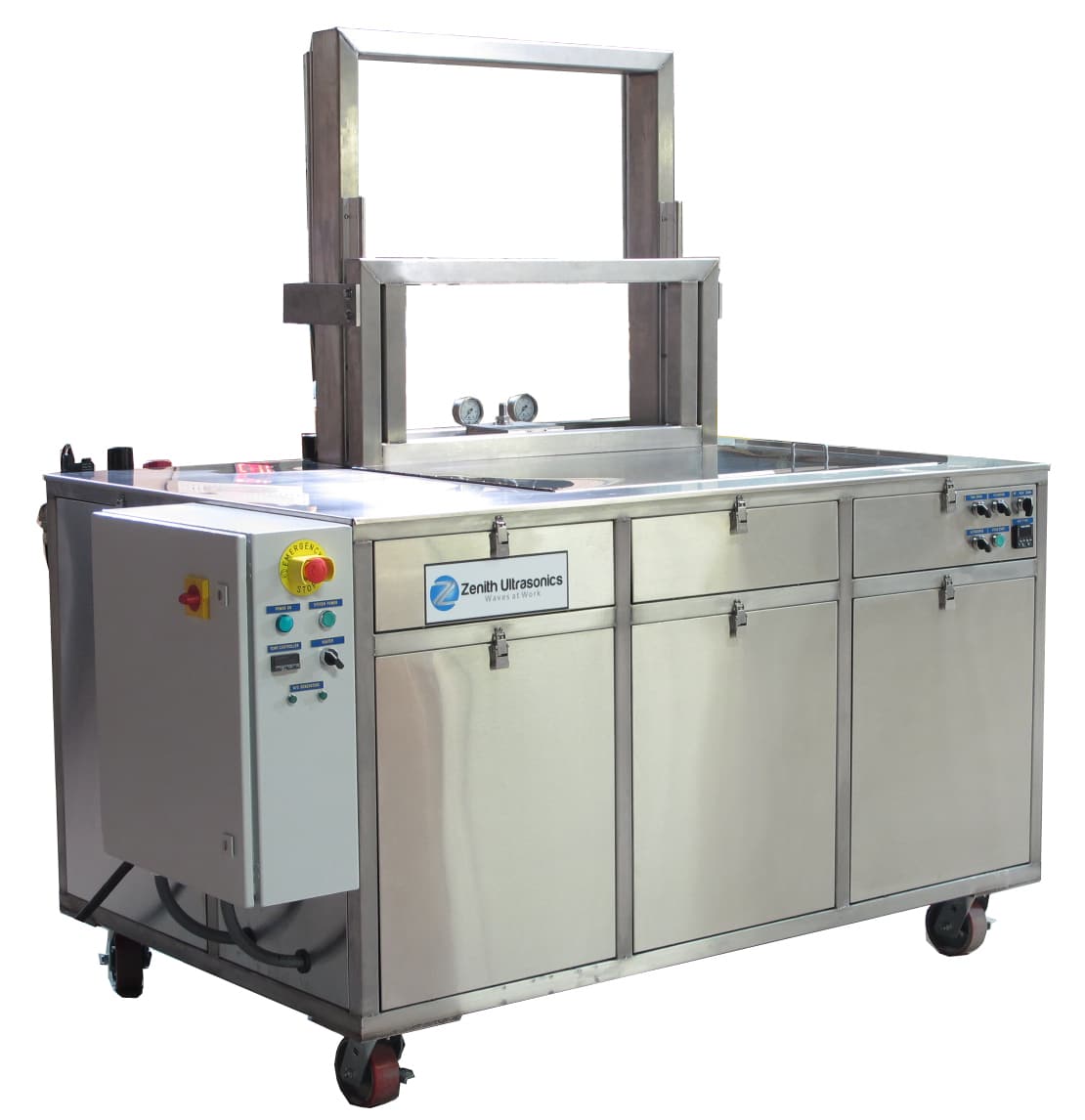Oscillating Parts during Ultrasonic Cleaning will Drastically Improve Results
The best ultrasonic cleaning processes available will include intermittent oscillation of parts during the cleaning cycle. Oscillation of parts during ultrasonic cleaning will drastically improve the speed and cleaning performance of an ultrasonic cleaning system, and will reduce or eliminate damage to sensitive parts, such as aluminum aerospace components or others manufactured of materials which are prone to cavitational erosion (shown in the neighboring photo). This web page describes how oscillation will improve the performance of an ultrasonic cleaning system. For more information regarding ultrasonic damage, see our web page entitled “Ultrasonic Damage” which can be found under the Technical Info drop-down menu above.

Why is oscillation needed?
To understand why oscillation systems improve the ultrasonic cleaning process, one must understand that ultrasonic cleaners do not blast contaminants from the surface of the parts being cleaned, but rather loosens it from the surface. While this process can be effective for many part designs, parts which include fine detail, such as threaded areas, blind holes, metal folds, and other similar design features, will entrap the loosened contaminants, thereby preventing it from being removed from the parts. Customers are surprised to find that contaminants still remain, even though the contaminant in question is loosely-bonded, and should be easily removed. The problem is not the ultrasonic cleaning system, but is rather the entrapment of contaminants which have been loosened, but not flushed into the cleaning fluid.
Oscillation systems also improve the cleaning of any orifice or hole which has the potential to entrap air pockets when parts are submerged in a liquid. Many part designs include blind holes or cavities which will entrap air that prevents ultrasonic cleaning in these areas. By oscillating the parts, entrapped air may be released, thereby permitting ultrasonic cleaning in these difficult areas. Even if the air is not completely removed, the flushing action of fluid will serve to clean these areas significantly better than they would be cleaned with ultrasonic action alone.
Oscillation will also increase the effectiveness of rinse processes as well. Blind holes and other part detail has the potential to entrap detergents as well as contaminants. These detergents will be transferred into the rinse bath, and if parts are not oscillated during the rinse process, effective rinsing may not be possible.
Why is Zenith’s oscillation system design better?
While most oscillation systems delivered by competitive vendors continuously oscillate during the cleaning process, those manufactured by Zenith can oscillate parts continuously, or intermittently. Intermittent oscillation is the preferred method for any ultrasonic cleaning process, since circulating fluids will reduce or eliminate ultrasonic cleaning altogether. By allowing the parts to rest stationary, ultrasonic cleaning is optimized since the cleaning fluid is rather still. Intermittently, parts are oscillated to allow the loosened contaminants to be flushed out of contaminant entrapment areas. This dwell/oscillation sequence repeats itself for the entire duration of the ultrasonic cleaning process, and can be programmed to allow any combination of oscillation/dwell time values to match the product design. If the product includes significant amounts of detail, oscillation cycles may be extended, while dwell times are decreased. However, if the contaminant being removed is highly bonded, the dwell time will be extended to allow the ultrasonic components to loosen the contaminant in question. For more information regarding how fluid circulation affects the ultrasonic cleaning process, see our web page entitled “Fluid Circulation” which can be found in the Learning Center drop-down menu above.

Not only do Zenith oscillation systems include the ability to continuously or intermittently oscillation parts, systems are also capable of oscillating parts through the surface of the liquid, a very important feature for an oscillation system. Most oscillation systems found in the ultrasonic and parts washing industries only permit a few inches of oscillation, and do not allow parts to oscillate through the surface of the fluid. Although this technology is better than stationary ultrasonic cleaning alone, it is not nearly as effective as allowing the parts to oscillate through the surface of the liquid. When parts are passed through the liquid surface, cleaning fluid drains from entrapment areas, then refills these areas when parts are submerged again, providing superior flushing of loosened contaminants. Also, cleaning fluid is dragged across the surface of the parts with each oscillation stroke which significantly improves the cleaning action of the system. In fact, there are those applications which will fail unless parts are dragged through the surface of the cleaning agent!
Since oscillation improves the cleaning action of any ultrasonic cleaning system, all Zenith Automated Ultrasonic Cleaning Systems also include oscillation capabilities in the ultrasonic cleaning and rinsing cycles. Depending upon the type of automation platform purchased, systems either oscillate just prior to basket transfer, or intermittently during the entire process.
When you contact Zenith for applications assistance, our sales engineers will determine if oscillation would benefit your cleaning process, and will discuss the many benefits that these systems provide.

